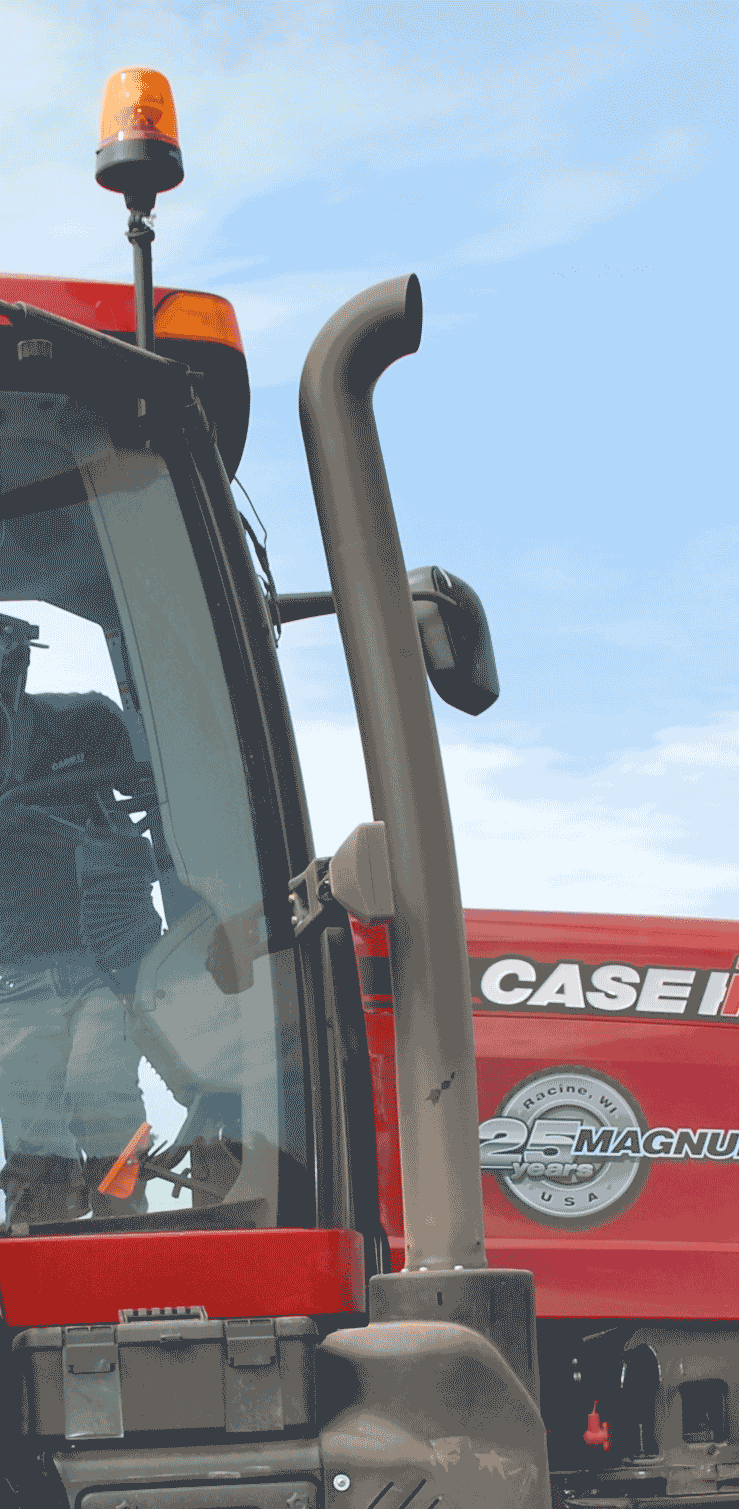Tier 4 Final
AN UPDATE ON TECHNOLOGY STRATEGIES
ALONG WITH THEIR Canadian and American counterparts, Ontario farmers are already somewhat familiar with Tier 4 standards and their associated new technology. In 1996, the US government began introducing the Tier regulations to reduce pollutants and particulate matter produced in heavy equipment engine exhaust. The standards are intended to reduce smog, acid rain and crop damage, as well as respiratory problems and diseases.

Canada has parallel legislation that was first introduced in 2006 and amended in 2012. European heavy equipment makers have also faced major changes in emissions regulations over the last decade and timelines there have moved ahead of those in North America.
Here, manufacturers must currently comply with Tier 4 Interim standards for some horsepower ranges. Companies are required to meet ‘Tier 4 Final’ standards by January 1, 2014 for equipment 175 horsepower (hp) and larger, and have an additional year for smaller equipment between 75 to 175 hp.
All heavy equipment makers are using one or both of these two main technology options to treat emissions:
- ‘Cooled Exhaust Gas Recirculation’ (CEGR) involves exhaust being recirculated into the combustion chamber to reduce the formation of nitrogen oxides. To transform and/or reduce particulate matter, a Diesel Oxidation Catalyst (DOC) and Diesel Particulate Filter (DPF) are employed.
- ‘Selective Catalytic Reduction’ (SCR) involves treating exhaust gases with an ammonia and water based substance known as Diesel Exhaust Fluid (DEF). When the exhaust passes over the SCR catalyst in the presence of the fluid, nitrogen oxides are broken down into harmless nitrogen and water.
CEGR is well-suited to machines that operate at steady engine revolutions per minute (RPMs), where consistent exhaust temperatures aid in the reduction of particulate matter in the DPF. For equipment running with variable engine power demands, SCR is the better choice. It controls emissions while providing ongoing fresh air to the engine, allowing it to run at peak performance and full power as RPMs change.
Tractors are in the middle. The engines of tractors sometimes only undergo a steady load for things like uniform planting or harvesting, but are also often faced with tasks where variable power demands are required. For that reason, and because the Tier 4 Final standards are so much stricter than Tier 3, some tractor manufacturers like John Deere will employ both CEGR and SCR for Tier 4 Final, says Barry Nelson, John Deere Manager of Media Relations (Agriculture & Turf Division). “Tractor engines need to be able to provide extra torque, for example to pull a cultivator in a sticky part of a field,” he notes.
AGCO is another company that is using both technologies – in their case, SCR with a small amount of CEGR. “This combination provides our customers fuel economy benefits, lower fluid consumption (fuel and DEF), longer engine service intervals and longer engine life since these technologies are post-combustion processes creating less heat in the engine,” says Conor Bergin, AGCO Product Marketing Manager for high horsepower tractors. He adds that “this system will allow our engines to do what they do best, produce exceptional horsepower and torque without sacrifice.”
However, New Holland and Case IH are among those manufacturers using only SCR technology to meet Tier 4 Final regulations for their large tractors and combines.
Case IH did not choose to go with CEGR because the recirculated exhaust gas contains carbon that can be deposited into the engine oil and creates the possibility of wear, notes Commercial Product Training Manager Leo Bose. “Using our patented SCR system allows our high horsepower tractors and combines to lengthen service intervals,” he says, “and it keeps things simpler in terms of overall design to use only one system.”
New Holland states in their press material that high-powered agricultural machines generate more engine heat and require enhanced cooling systems, which makes SCR the natural choice for machines over 100 hp – reducing cooling requirements and guaranteeing power output.
operation and maintenance
Although Tier 4 Final technology and its development does mean that new tractors will cost more than their predecessors, there is good news as well (besides cleaner air). For example, during tractor operation, no intervention from the operator is required to manage Tier 4 Final technology.
In terms of maintenance, SCR systems require that the DEF filter be checked and the DEF tank re-filled on a regular basis, which are both easy tasks.
During ongoing CEGR operation, the DPF filter undergoes three types of ‘regeneration’ – a process where particulate matter in the filter is reduced to ash. Two of these occur during machine operation, with ‘passive regeneration’ happening on an ongoing basis. ‘Active regeneration’ occurs when sensors detect that particulate matter has accumulated to a certain level in the filter. It involves a high temperature burn-off of ash where diesel fuel is injected into the exhaust to increase its temperature. Sensors also indicate when ‘forced regeneration’ is required. This involves the engine sitting idle while the control unit conducts a very high temperature exhaust cycle. An interface in the cab lets the operator know regeneration status.
However, the ash remains incombustible in the DPF, so with CEGR, the only maintenance required is cleaning ash out of the DPF. US regulations require that this situation occur only after at least 4,500 hours of use, and manufacturers are only able to meet this requirement if operators use ‘low ash’ engine oil with a CJ-4 rating. Using other types of oil is not an option.
More good news is that even though CEGR requires extra fuel to periodically clean out particulates from the DPF, all companies agree that the overall efficiency of Tier 4 Final equipment will be comparable or higher than anything produced before. This is not due to Tier 4 emissions technology, which are after-treatment exhaust systems, but due to the development of other fuel efficiency technologies. Nelson says these include electronic fuel injection, more efficient transmissions integrated with engine performance, and other cutting-edge electronic systems that adjust fuel usage according to many engine factors on a second-by-second basis. Nelson adds that fuel efficiency is measured in tractors in ‘horsepower hours per gallon,’ and that tractor engines are actually more fuel-efficient when they are torqued down. •







